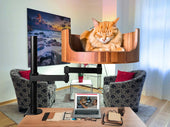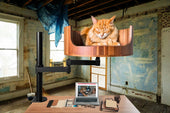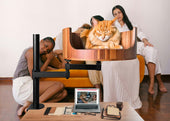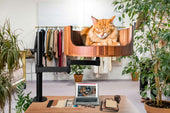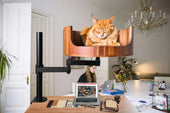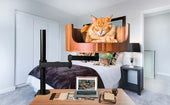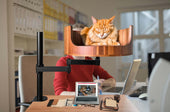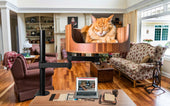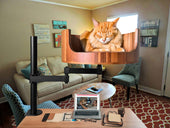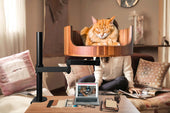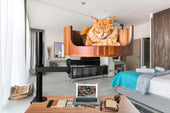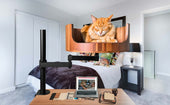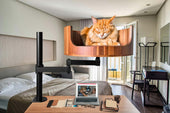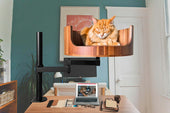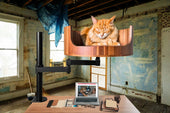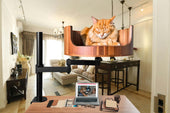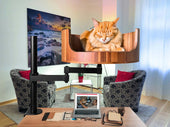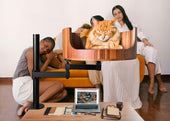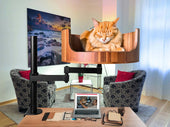
Is My Cat Limping? Signs to Watch For and What to Do
Share
If your furry feline friend is exhibiting signs of limping, it can be a cause for concern for any cat parent. Cats are masters at hiding pain, so it's crucial to pay attention to even subtle changes in their behavior or gait. In this article, we will discuss the common signs of limping in cats, potential causes, and what steps you can take to help your cat feel better.
From sudden injuries to chronic conditions like arthritis, there are a variety of reasons why a cat may start limping. In addition to changes in gait, be on the lookout for signs of pain such as vocalization, reluctance to jump or play, and changes in grooming habits. Knowing what to watch for and when to seek veterinary care can make all the difference in your cat's comfort and well-being. Let's dive into the world of feline limping and explore how you can best support your cat through any mobility challenges.
1. Limping in cats can be caused by various underlying health issues, including injuries, arthritis, or infections.
2. Signs to watch for include favoring one leg, reluctance to jump or climb, and changes in gait or posture.
3. If you notice your cat limping, it's important to promptly consult with a veterinarian for a thorough examination and proper diagnosis.
4. Treatment options may include pain management, rest, physical therapy, or surgery, depending on the cause of the limping.
5. Early detection and intervention are crucial in ensuring the best possible outcome for your cat's health and well-being.
Signs Your Cat May be Limping
There are several signs to watch for that may indicate your cat is limping. One of the most obvious signs is if your cat is favoring one leg over another or is holding a leg up off the ground. You may also notice your cat walking with a limp or avoiding putting weight on a particular leg. Other signs may include changes in your cat's gait, such as a noticeable awkwardness in their movements or a reluctance to move around as much as usual.
Possible Causes of Limping in Cats
There are a variety of reasons why your cat may be limping, ranging from minor injuries to more serious medical conditions. Some common causes of limping in cats include sprains or strains, cuts or wounds on the paw pads, broken bones, arthritis, or dislocated joints. In some cases, limping may also be a sign of an underlying health issue, such as an infection or nerve damage.
What to Do If Your Cat is Limping
If you notice that your cat is limping, it is important to take action to determine the cause and provide appropriate treatment. Start by carefully examining your cat's leg or paw for any signs of injury, such as cuts, swelling, or bruising. If you suspect your cat has a minor injury, you can try to provide some relief by keeping your cat calm and comfortable, applying a cold compress to the affected area, and limiting their activity. However, if the limping persists or your cat shows signs of severe pain or distress, it is best to take them to the vet for a thorough examination and proper treatment.
Frequently Asked Questions
Why is my cat limping?
Your cat may be limping due to various reasons such as injury, arthritis, infection, or even a foreign object stuck in their paw. It is best to have your cat examined by a veterinarian to determine the cause of the limp.
Can the Desk Cat Nest help alleviate my cat's limping?
The Desk Cat Nest can provide a comfortable and cozy resting place for your cat, which may help with their overall well-being. However, it is not a direct solution to addressing the underlying cause of your cat's limp. Consult with your veterinarian for appropriate treatment options.
Is the Desk Cat Nest suitable for cats with mobility issues?
The Desk Cat Nest is designed to be a comfortable lounging spot for cats of all abilities. It has a low entry point and a spacious interior, making it accessible for cats with mobility issues. However, if your cat is experiencing severe mobility problems, it is important to seek veterinary care.
Can the Desk Cat Nest help with my cat's arthritis?
While the Desk Cat Nest can provide a cozy space for your cat to rest and relax, it is not a treatment for arthritis. If your cat is diagnosed with arthritis, your veterinarian may recommend additional measures such as medication, supplements, or physical therapy to manage the condition.
In conclusion, providing your limping cat with a supportive and comfortable environment is crucial for their recovery. The Desk Cat Bed is a valuable choice as it offers a cozy and elevated spot for your cat to rest and heal. The raised design helps relieve pressure on their joints and muscles, promoting faster recovery and ensuring they can continue to relax and rest comfortably. Invest in the Desk Cat Bed to provide your furry friend with the support they need during their recovery process.



